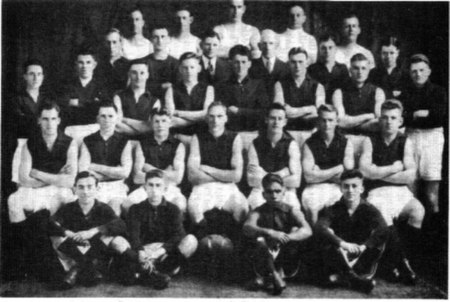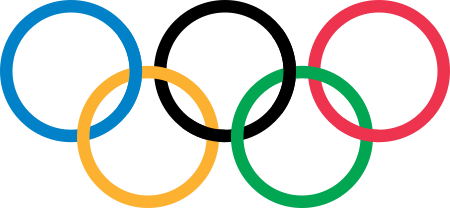Social intelligence
|
Read other articles:

This article is about the eighth governor of North Carolina. For his son, the 27th governor, see Richard Dobbs Spaight Jr. American Founding Father and politician Richard SpaightPortrait by Ellen Sharples, c. 1800–1810.Member of the U.S. House of Representativesfrom North Carolina's 10th districtIn officeDecember 10, 1798 – March 3, 1801Preceded byNathan BryanSucceeded byJohn Stanly8th Governor of North CarolinaIn officeDecember 14, 1792 – November 19, 1…

بوشكان - قرية - تقسيم إداري البلد إيران[1] عاصمة لـ ناحية بوشكان المحافظة بوشهر المقاطعة مقاطعة دشتستان الناحية ناحية بوشكان القسم الريفي قسم بوشكان الريفي (مقاطعة دشتستان) خصائص جغرافية إحداثيات 28°49′45″N 51°41′53″E / 28.82917°N 51.69806°E / 28.82917; 51…

Governor of South Australia (1976–77) For the British trade union leader, see Doug Nicholls (trade unionist). PastorThe Honourable SirDouglas NichollsKCVO OBE28th Governor of South AustraliaIn office1 December 1976 – 30 April 1977MonarchElizabeth IIPremierDon DunstanPreceded bySir Mark OliphantSucceeded bySir Keith Seaman Personal detailsBorn(1906-12-09)9 December 1906Cummeragunja Reserve, New South WalesDied4 June 1988(1988-06-04) (aged 81)Mooroopna, VictoriaNationalit…

2018 United States Supreme Court caseBenisek v. LamoneSupreme Court of the United StatesArgued March 28, 2018Decided June 18, 2018Full case nameO. John Benisek, et al. v. Linda H. Lamone, Administrator, Maryland State Board of Elections, et al.Docket no.17-333Citations585 U.S. ____ (more)138 S. Ct. 1942; 201 L. Ed. 2d 398Case historyPriorMotion to dismiss granted, Benisek v. Mack, 11 F. Supp. 3d 516 (D. Md. 2014); affirmed, 584 F. App'x 140 (4th Cir. 2014); cert. granted, 135 S. Ct. 2805 (2015);…

Ne doit pas être confondu avec Diiode. Différents types de diodes, avec dans le bas, un pont de diodes La diode (du grec di deux, double ; odos voie, chemin) est un composant électronique. C'est un dipôle non linéaire et polarisé (ou non symétrique). Le sens de branchement d'une diode détermine le fonctionnement du circuit électronique dans lequel elle est placée. Sans précision ce mot désigne un dipôle qui ne laisse passer le courant électrique que dans un sens. Ce dipôle es…

American Scouting organization (1915–1924) Lone Scouts of AmericaHeadquartersChicago, IllinoisCountryUnited StatesFoundedJanuary 9, 1915DefunctJune 16, 1924 (merged with the Boy Scouts of America)FounderW. D. BoyceChief TotemW. D. Boyce Scouting portal Lone Scouts of America (LSA) was a Scouting organization for American boys that operated from 1915 until it merged with the Boy Scouts of America (BSA) in 1924. The LSA was founded by W. D. Boyce, publisher of the Chicago Ledger and the Sa…

American-Canadian digital media and broadcasting company Vice Media Group LLCLogo of the Vice Media Group LLCPrimary logo used by various assetsCompany typeJoint ventureIndustryMass mediaFounded1994; 30 years ago (1994)Founders Suroosh Alvi Shane Smith Gavin McInnes FateChapter 11 bankruptcyHeadquarters Montreal, Quebec, Canada (1994–2001) Brooklyn, New York, U.S. (2001–present) Key peopleBruce Dixon (CEO)[1]Brands Vice UnTypical[2] Viceland Noisey Motherboa…

Geological linear zone where the lithosphere is being pulled apart Chasm redirects here. For other uses, see Chasm (disambiguation). This article is about the geological concept. For other uses, see Rift (disambiguation). Not to be confused with rift zone. Block view of a rift formed of three segments, showing the location of the accommodation zones between them at changes in fault location or polarity (dip direction) Gulf of Suez Rift showing main extensional faults In geology, a rift is a line…

Number of stacked spheres in a pyramid Geometric representation of the square pyramidal number 1 + 4 + 9 + 16 = 30. In mathematics, a pyramid number, or square pyramidal number, is a natural number that counts the stacked spheres in a pyramid with a square base. The study of these numbers goes back to Archimedes and Fibonacci. They are part of a broader topic of figurate numbers representing the numbers of points forming regular patterns within different shapes. As well as counting spheres in a …

Rugby league competition Rugby league season 2002 National Rugby LeagueDuration15 March – 6 October 2002Teams15Premiers Sydney (12th title)Minor premiers New Zealand (1st title)Matches played189Points scored9083Average attendance14,054Attendance2,656,198Top points scorer(s) Hazem El Masri (254)Player of the year Andrew Johns (Dally M Medal)Top try-scorer(s) Nigel Vagana (23)← 20012003 → The 2002 NRL season was the 95th season of professional rugby league football in Australia and…

NBC affiliate in St. Louis KSDKSt. Louis, MissouriUnited StatesChannelsDigital: 35 (UHF)Virtual: 5Branding5 On Your SideProgrammingAffiliations5.1: NBCfor others, see § SubchannelsOwnershipOwnerTegna Inc.(Multimedia KSDK, LLC)HistoryFirst air dateFebruary 8, 1947(77 years ago) (1947-02-08)Former call signsKSD-TV (1947–1979)Former channel number(s)Analog:5 (VHF, 1947–2009)Former affiliationsAll secondary:DuMont (1947–1956)[1]CBS (1947–1953)ABC (1948–1953)Call sig…

Uss wisconsin pada tahun 1990 USS Wisconsin (dijuluki Wisky) adalah kapal tempur kelas Iowa milik Angkatan Laut Amerika Serikat yang dinamai untuk menghormati negara bagian Wisconsin. Kapal ini dibangun di Philadelphia, Pennsylvania, dan diluncurkan pada 7 Desember 1943 (hari peringatan kedua dari serangan Pearl Harbor), yang disponsori oleh istri Gubernur Walter Goodland dari Wisconsin. Selama kariernya, Wisconsin bertugas di Teater Pasifik Perang Dunia II, di mana ia ditembaki benteng Jepang d…

Artikel ini bukan mengenai Khaleej Sirte SC. Artikel ini membutuhkan rujukan tambahan agar kualitasnya dapat dipastikan. Mohon bantu kami mengembangkan artikel ini dengan cara menambahkan rujukan ke sumber tepercaya. Pernyataan tak bersumber bisa saja dipertentangkan dan dihapus.Cari sumber: Al-Khaleej FC – berita · surat kabar · buku · cendekiawan · JSTOR (August 2023) KhaleejNama lengkapKhaleej Football ClubJulukanAl-DanahBerdiri1945; 79 tahun lalu …

36KrKriptonGas kripton dalam tabung lucutan Garis spektrum kriptonSifat umumPengucapan/kripton/[1] Penampilangas tak berwarna, akan menjadi putih bila diletakkan pada medan listrik bertegangan tinggiKripton dalam tabel periodik 36Kr Hidrogen Helium Lithium Berilium Boron Karbon Nitrogen Oksigen Fluor Neon Natrium Magnesium Aluminium Silikon Fosfor Sulfur Clor Argon Potasium Kalsium Skandium Titanium Vanadium Chromium Mangan Besi Cobalt Nikel Tembaga Seng Gallium Germanium Arsen Sele…

Richard CromwellRichard Cromwell 2nd Lord Protector of the Commonwealth of England, Scotland and IrelandMasa jabatan3 September 1658 – 25 May 1659(264 days)PendahuluOliver CromwellPenggantiCouncil of State Informasi pribadiLahir(1626-10-04)4 Oktober 1626Huntingdon, CambridgeshireMeninggal12 Juli 1712(1712-07-12) (umur 85)Cheshunt, HertfordshireKebangsaanEnglishSuami/istriDorothy MaijorHubunganFather:Oliver CromwellMother:Elizabeth BourchierAnak See list Elizabeth Cromwell(1650–…

American composer Robert Carl at the piano - from a concert at the Salinas Arts Center (Salinas, KS) in Feb. 2004. Robert Carl (born July 12, 1954 in Bethesda, Maryland) is an American composer who currently resides in Hartford, Connecticut. He was chair of the composition program at the Hartt School, University of Hartford.[1] Music Carl studied with Jonathan Kramer, George Rochberg, Ralph Shapey, Iannis Xenakis, Betsy Jolas, George Crumb, Richard Wernick, and Robert Morris.[2] …

Agnieszka Radwańska阿格涅什卡·拉德萬斯卡外號Aga、大拉德、A·拉國家/地區 波蘭居住地 波蘭克拉科夫出生 (1989-03-06) 1989年3月6日(35歲) 波蘭克拉科夫身高1.73米(5英尺8英寸)體重56公斤(123磅)轉職業年2005年4月23日持拍右手持拍(雙手反拍)職業獎金$27,683,807美金單打成績職業戰績517–246(67.76%)冠軍頭銜WTA:20ITF:17最高排名2(2012年7月9日)現今排名退役(2018年11�…

Casper ØyvannNazionalità Norvegia Altezza185 cm Calcio a 5 RuoloDifensore Termine carriera2020 CarrieraSquadre di club 2015-2020 Hulløy? (?) Nazionale 2018-2020 Norvegia5 (0) Calcio RuoloDifensore Squadra Molde CarrieraGiovanili Bodø/Glimt Squadre di club1 2018-2019 Bodø/Glimt0 (0)2019→ Mjølner8 (0)2020 Tromsdalen18 (0)2021-2023 Tromsø48 (0)2023- Molde0 (0) 1 I due numeri indicano le presenze e le reti segnate, per le sole partite di campio…

Football match2020 Taça de Portugal finalEstádio Cidade de CoimbraEvent2019–20 Taça de Portugal Benfica Porto 1 2 Date1 August 2020VenueEstádio Cidade de Coimbra, CoimbraMan of the MatchChancel Mbemba (Porto)[1]Fair Player of the MatchDanilo Pereira (Porto)[1]RefereeArtur Soares DiasAttendance0[note 1]← 2019 2021 → The 2020 Taça de Portugal final was the final match of the 2019–20 Taça de Portugal, which decided the winner of the 80th season of the T…

French chemist and apothecary (1703–1770) Guillaume-François RouelleBorn15 September 1703Mathieu, Kingdom of FranceDied3 August 1770 (aged 66)Paris, Kingdom of FranceNationalityFrenchKnown forBaseScientific careerFieldsChemistry Guillaume François Rouelle (French pronunciation: [ɡijom fʁɑ̃swa ʁwɛl]; 15 September 1703 – 3 August 1770)[1] was a French chemist and apothecary. In 1754 he introduced the concept of a base into chemistry as a substance which reacts with…